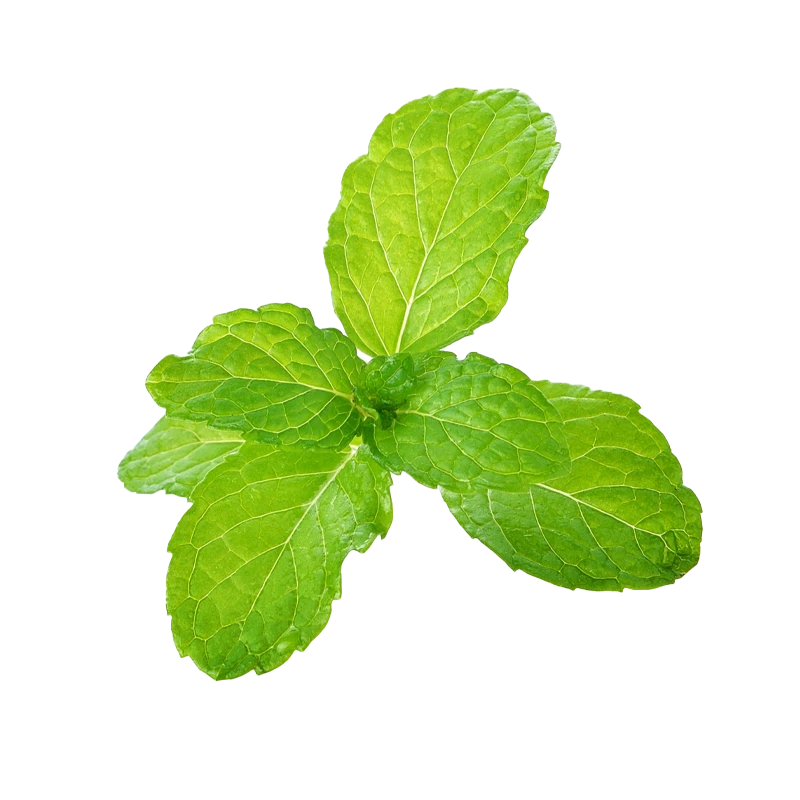Fresh Mint — Nutrients, Health Benefits, And Shopping Tips

Written by Listonic Team
Last update on September 4, 2024
Nutrition facts
Nutrition facts
Amount per 100 g
Calories
🔥 70 kcal
| Nutrition per: 100 g | Value | % Daily Value* |
|---|---|---|
| Carbs | 14 g | 5.09% |
| Fiber | 8 g | 28.57% |
| Sugars | 0 g | - |
| Glycemic Index | 5 | - |
| Protein | 3 g | 6% |
| Sodium | 31 mg | 1.35% |
| Total Fat | 1 g | 1.28% |
*The % of Daily Value (DV) tells you how much a nutrient in a serving of food contributes to a daily diet. 2,000 calories a day is used for general nutrition advice.
8 g
🥔 Good Fiber Content
5
🟢 Low Glycemic Index
Did you know?
Health benefits
- Supports digestive health by soothing the stomach and reducing symptoms of indigestion and bloating.
- Contains antioxidants such as rosmarinic acid, which help protect the body from free radicals and reduce inflammation.
- Freshens breath, providing a natural way to combat bad breath.
- Rich in vitamins and minerals such as Vitamin A, iron, and manganese, which support overall health and well-being.
Health risks
- Potential for allergic reactions in some individuals, particularly those allergic to plants in the Lamiaceae family, causing symptoms like itching, swelling, or difficulty breathing.
- Digestive discomfort such as heartburn or stomach upset, particularly in individuals with sensitive stomachs or those prone to acid reflux.
- Potential interactions with medications as mint can interfere with the effectiveness of certain drugs, particularly those related to stomach acid regulation.
- Risk of contamination with harmful bacteria or pesticides if not properly washed or sourced from a reputable supplier.
How to choose fresh mint
Fresh mint leaves are best when bright green and perky, with a strong, refreshing scent. Touch the leaves to ensure they are crisp and resilient, not limp or sticky.
Pass by any mint that has dark spots or a musty smell. Good mint should provide a clean, crisp flavor to beverages and dishes without overpowering other ingredients.

How to store fresh mint
Fresh mint should be kept in the refrigerator to maintain its vibrant flavor. Placing the stems in a glass of water and loosely covering with a plastic bag helps keep it fresh. This storage method can extend its freshness up to a week.
Too much moisture can cause mint leaves to rot. Avoid washing them before storing. Ensuring some airflow is crucial to prevent mold and keep the mint aromatic and fresh for a longer period.
✅ Extra Tip
How long does it last?
Fresh mint can last for 1-2 weeks in the refrigerator when stored in a plastic bag with a paper towel to absorb excess moisture. For longer storage, mint can be dried and kept for up to 6 months in an airtight container.
What to do with leftovers?
Leftover fresh mint can be used in a variety of dishes, both sweet and savory. Chop it and add to salads for a refreshing, herbal note, or mix it into a yogurt-based dip like tzatziki for a cool, tangy flavor. Fresh mint is also great in cocktails like mojitos or mint juleps, where it adds a bright, aromatic touch.
Use fresh mint in a fruit salad with watermelon, strawberries, and lime juice, or mix it into a grain salad with couscous or quinoa for added freshness. If you have a lot of mint, consider making a batch of mint pesto by blending it with olive oil, nuts, and Parmesan cheese, perfect for serving with pasta or grilled meats. Fresh mint can also be used as a garnish for desserts like ice cream, cakes, or tarts, or steeped in hot water to make a soothing mint tea. For a quick snack, try adding fresh mint to a bowl of mixed berries or blending it into a smoothie for a refreshing boost.
👨⚕️️ Medical disclaimer
Discover products from other categories
Listonic Team
Fact-checked
Our editorial team checked this article to make sure it was accurate at the time of publishing it.
Get the top-rated shopping list app

fresh mint
1 piece







